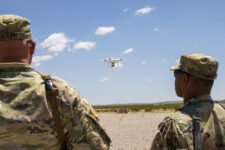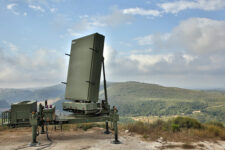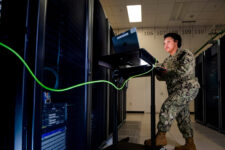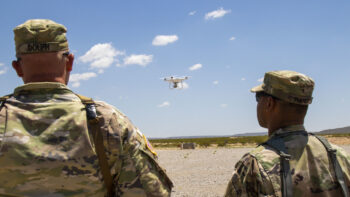
Cloud technology concept (Getty images)
WASHINGTON — Looking back at 2022, it feels like this year the Pentagon started making some real moves on the cyber and cloud front, but there were still some misses, namely with the confusion surrounding Joint All Domain Command and Control (JADC2).
In July 2021, the Defense Department announced it had canceled the Joint Enterprise Defense Infrastructure (JEDI) program in favor of a new multi-source, multi-vendor contract called the Joint Warfighter Cloud Capability (JWCC).
Seventeen months and a contract award delay later, DoD awarded Amazon Web Services, Google, Microsoft and Oracle each a piece of the $9 billion JWCC enterprise cloud contract. Each vendor will compete for individual task orders under the contract.
[This article is one of many in a series in which Breaking Defense reporters look back on the most significant (and entertaining) news stories of 2022 and look forward to what 2023 may hold.]
JWCC also allows DoD to acquire commercial cloud capabilities directly from the cloud service providers instead of going through an intermediary or reseller, creating for a more efficient and effective leveraging of those capabilities, DoD Chief Information Officer John Sherman told reporters earlier this month.
“And this is something we’re very excited about,” Sherman said. “So we’re leaning forward on this. This is a big day in the Department of Defense. It’s been a long, long journey to get here and I’m very proud of what the team has done to provide this capability to the Department of Defense.
JWCC is also meant to support other initiatives in the Pentagon, like the Joint All Domain Command and Control effort meant to better connect sensors to shooters. 2022 was supposed to be “delivery time” for JADC2, but it felt like DoD fell short of delivering real tangible successes.
The military services each have their own JADC2-aligned effort. The Army hosts its annual Project Convergence experiments, while the Air Force is developing its Advanced Battle Management System and the Navy has its secretive Project Overmatch.
In November, I had the chance to go to Ft. Irwin, Calif. and observe a part of this year’s Project Convergence. The big takeaway was that the Army is struggling with how to manage its data.
“So a lot of the challenge is going to be figuring out how…we process that as quickly as we can,” Army Secretary Christine Wormuth said. “And I think we did see some real…improvements in terms of how quickly we were able to take information and change it into sort of what I would call more actionable knowledge.”
Then there’s also the back and forth between the services on what exactly is going on with JADC2. In July, the Army’s top acquisition executive floated the idea of a JADC2-focused office (one was stood up in October) to help make sure requirements are stacked and prioritized and a large joint exercise that involves each of the disparate efforts from the military services. Later that month, an Air Force official said between all the different efforts, no one is thinking about how to be interoperable. On the other hand, some officials say the services are totally aligned.
This year also prompted the Defense Department to start thinking differently about its cyber operations following Russia’s invasion of Ukraine. Although there hasn’t been a lot of movement on the cyber front against the US, DoD, other federal agencies and the Biden administration have repeatedly iterated warnings that the Russian government could potentially conduct cyberattacks.
In November, Mieke Eoyang, deputy assistant secretary of defense for cyber policy, said DoD must “think very differently” about how it will fight in both the real world and cyberspace in the future after watching Russia invade Ukraine.
She mentioned DoD is now thinking about cyber operations in the context of armed conflict in four distinct ways;
- Making sure government-to-government communications and networks are secure, shown in how DoD’s communications with Ukraine have helped enable its defense and intelligence sharing.
- The importance of secure communications within the military, like how Ukraine’s military has been able to share information with forward commanders.
- In the informational space, thinking about what it means for Ukrainian citizens to be able to communicate with the world and tell their stories through social media platforms like TikTok, Twitter and Facebook, which “has denied Russian the information environment that they want to prosecute this conflict.”
- The inherent value in ensuring “essential” government functions. “As you look at attempts to destroy the kind of essential data that makes a country a country…such as passport records, birth records, property records…What do governments need to be able to continue to operate its essential function?” Eoyang said.






















